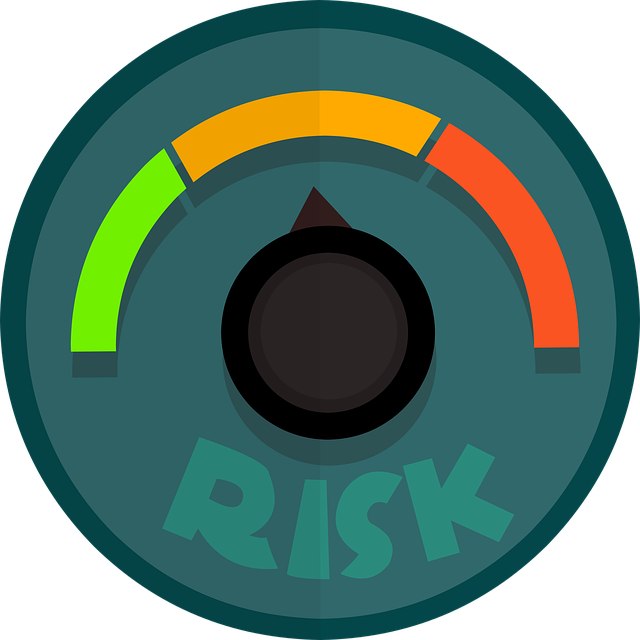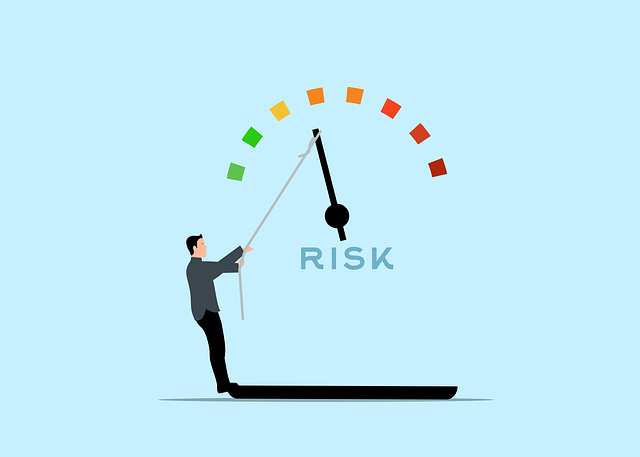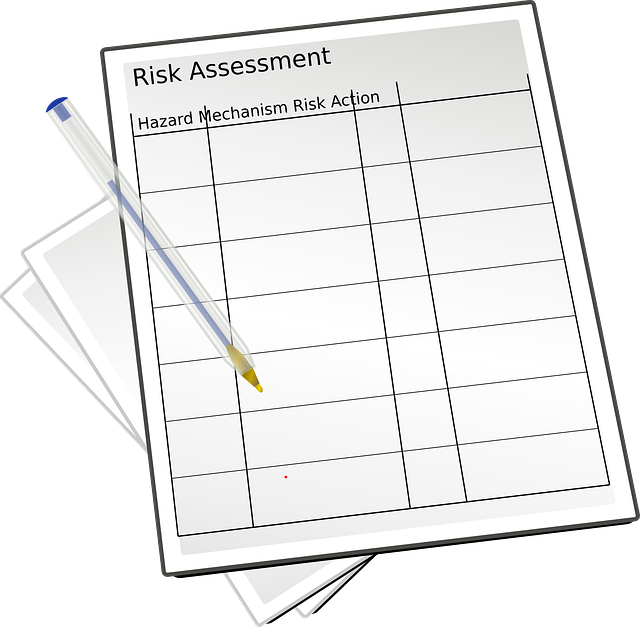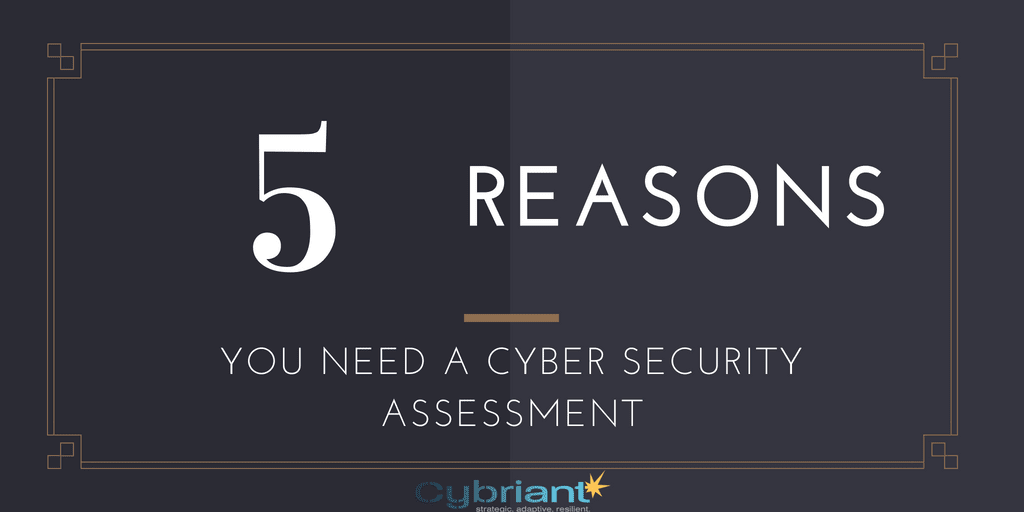As a CIO, you are responsible for the cyber security of your organization. But how can you be sure that your defenses are strong enough? A full cyber risk and security assessment should be a vital piece of your risk management strategy.

What is a Cyber Security Assessment?
A cyber security assessment is a process that evaluates an organization’s information security posture by identifying vulnerabilities and potential risks that could be exploited by hackers or other malicious entities. The assessment involves a comprehensive analysis of an organization’s network, systems, applications, and other assets to determine the overall level of security., Security professionals will work to develop a remediation plan that outlines specific steps to address any issues that have been uncovered and perform a cybersecurity risk. This could involve implementing new security controls and policies, reconfiguring network settings, or updating software applications to ensure they are secure.
Overall, the goal of a cyber security risk assessment report is to help organizations improve their security posture and reduce their risk of a cyber attack. By identifying vulnerabilities and potential risks, organizations can take steps to remediate these issues before they can be exploited by malicious actors, ultimately enhancing their overall security posture and protecting their information assets from potential harm.
A cyber security assessment typically involves the use of specialized tools and techniques, such as vulnerability scanners, penetration testing, and network analyzers, which enable security professionals to identify weaknesses and potential threats within an organization’s infrastructure.
The assessment process typically begins with a thorough inventory of an organization’s information assets, including hardware, software, and data. This is followed by an assessment of existing security controls and policies to determine their effectiveness in mitigating potential security risks.
Once potential vulnerabilities and risk areas have been identified, security professionals then work to develop a remediation plan that outlines specific steps to address any issues that have been uncovered. This could involve implementing new security controls and policies, reconfiguring network settings, or updating software applications to ensure they are secure. And finally, the assessment will likely culminate with further investigation into any affected systems to confirm that the vulnerabilities have been addressed and the business operations security posture is improved.
By conducting in-depth cyber security risk assessments beforehand, organizations can take steps to identify weaknesses and potential threats before they can be exploited by malicious actors. This helps to ensure an organization’s information assets are protected from potential harm.
Here are five reasons why you should perform a Cyber Security Assessment.
1. Cybercrime is on the rise and costing businesses billions of dollars each year
According to a recent report, cybercrime is on the rise and costs businesses billions of dollars each year. While the costs of cybercrime are significant, there are steps that businesses can take to protect themselves.
One important step is to invest in managed services. Managed services can help businesses to stay compliant with cybersecurity best practices and mitigate the risks associated with cybercrime. In addition, managed services can help businesses to respond quickly and effectively to security incidents because of cybercrime.
By their security teams investing in managed services, businesses can protect themselves from the growing threat of cybercrime.
2. A cyber security assessment can help you identify your company’s vulnerabilities and protect your data
A cyber security assessment is an important tool for any business that wants to protect its data. By identifying vulnerabilities and potential threats, a company can take steps to mitigate the risks. In addition, a well-designed cyber risk assessment can help to improve the overall security of the company’s systems.
There are many different types of vulnerability management services available, and choosing the right one can be a challenge.
However, working with a reputable provider that offers managed services can help to ensure that your company’s data is safe and secure. By taking the time to assess your company’s cyber security needs, you can help to protect your data and reduce the risk of a devastating data breach yourself.

3. Most cyber-attacks are not sophisticated and can be easily prevented with the right precautions
Despite headlines warning of sophisticated cyber attacks, the vast majority of attacks are actually fairly unsophisticated and can be easily prevented with the right precautions. Network security is the first line of defense against cyber attacks, and it is important to make sure that all networked devices are properly secured.
Endpoint security is also critical, as this is where most attacks originate. By taking simple steps to secure network and endpoint devices, businesses can dramatically reduce their risk of being attacked.
4. Cybersecurity is not just for large companies – even small businesses can be targeted
While small businesses may not be the first target for cybercriminals, that doesn’t mean they are immune to attack. In fact, small businesses are often appealing targets because they usually have fewer resources dedicated to cybersecurity. As a result, small businesses need to be extra vigilant in protecting their data and systems from attack.
There are a number of steps small businesses can take to improve their cybersecurity, including investing in robust security software and training employees in best practices. By taking these steps, small businesses can help to protect themselves from the growing threat of cybercrime.
Read our IT Security Best Practices Checklist
5. Investing in cybersecurity is an important part of protecting your business and should not be taken lightly
Investing in cybersecurity is an important part of protecting your business. Cybersecurity is not something that should be taken lightly, and businesses need to make sure that they are taking the necessary steps to protect their data and systems.
There are a number of different ways to improve your company’s cybersecurity, but it is important to remember that there is no silver bullet. The best approach is to take a holistic view of your company’s security and implement a range of different measures.
By taking a comprehensive approach to cybersecurity, you can help to protect your business from the growing threat of cybercrime.
Importance of Cyber Security
As the world increasingly moves online, the importance of cyber security cannot be understated. Businesses of all sizes must ensure that their systems are properly protected against cyber threats. One way to do this is by conducting regular cybersecurity evaluations. These evaluations help to identify weaknesses in security controls and assess the effectiveness of current security measures. By addressing these issues early on, businesses can minimize the risk of a cyber-attack and protect their data from being compromised. In today’s digital age, cyber security is essential to doing business. By taking steps to ensure their systems are secure, businesses can protect themselves from costly cyber attacks.

Information Security Assessments
information security assessments are important for all businesses, regardless of size. By regularly evaluating their security controls, businesses can identify weaknesses and take steps to mitigate them. In addition, these evaluations help businesses to ensure that their current security measures are effective. By taking these precautions, businesses can minimize the risk of a cyber attack and safeguard their data.
Network Security Assessments
Network security and cybersecurity risk assessments are important for all businesses, regardless of size. By regularly evaluating their security controls, businesses can identify weaknesses and take steps to mitigate them. In addition, these evaluations help businesses to ensure that their current security measures are effective. By taking these precautions, businesses can minimize the risk of a cyber attack and safeguard their data.
Cybersecurity Risk Assessment
A cybersecurity risk assessment is an important tool for businesses of all sizes. By identifying the risks their business faces, businesses can put in place the appropriate security measures to mitigate them. In addition, by having a formalized security risk assessment process, businesses can ensure that they are regularly evaluating their security posture and addressing any potential weaknesses.

Risk Assessment Process
The risk assessment process begins with identifying the assets that need to be protected. Once these critical assets have been identified, the next step is to identify the risks that could potentially compromise them. Once the risks have been identified, businesses can put in place the appropriate security measures to mitigate them. Finally, businesses should regularly review their security posture and update their risk assessment as needed.
Consider Cybriant for a comprehensive cybersecurity risk assessment template. Risk management, security controls, and more will be assessed.

Cyber Security Assessment Tools
Here are the top cyber security assessment tools: In today’s dynamic threat landscape, organizations need to adopt comprehensive cyber security assessment tools to identify vulnerabilities and mitigate risks. Here are some of the top cyber security assessment tools that provide an in-depth risk analysis of an organization’s information security posture:
1. Nessus:
A widely used network scanning tool that helps identify vulnerabilities and misconfigurations in an organization’s assets.
2. Wireshark:
A network protocol analyzer that captures and examines the packets in real time, revealing potential vulnerabilities and attacks.
3. OpenVAS:
An open-source vulnerability scanner that helps identify potential security threats in an organization’s network.
4. Qualys:
A cloud-based security solution that scans and analyzes an organization’s assets for vulnerabilities in real time.
5. Burp Suite:
A comprehensive web application testing tool that allows for in-depth analysis and identification of web-based vulnerabilities.
6. Metasploit:
A powerful penetration testing tool that provides a comprehensive framework to perform a wide range of security assessments.
7. Nmap:
A powerful network vulnerability scanner that uses a combination of techniques to identify potential weaknesses in an organization’s network.
8. Acunetix:
A web application security solution that scans and identifies vulnerabilities in web applications.
9. Rapid7:
A cloud-based vulnerability management solution that provides automated vulnerability scanning, dashboards, and vulnerability prioritization.
10. SolarWinds Security Event Manager (SEM):
A powerful Security Information and Event Management (SIEM) tool that provides real-time monitoring, threat detection, and compliance management.
These cyber security risk assessment tools, when used in conjunction with a comprehensive cyber security strategy, can help organizations identify and remediate vulnerabilities, mitigate risks, and ultimately enhance their security posture.
What is a Network Security Assessment?
A network security assessment is a process that evaluates an organization’s network infrastructure to identify potential vulnerabilities and risks that could be exploited by cyber attackers. This assessment involves a comprehensive analysis of an organization’s network components, including hardware devices, software systems, and data transmission mechanisms, to determine the overall level of security.
To conduct a network security assessment, security professionals use a variety of tools and techniques such as network scanning, penetration testing, firewall analysis, and intrusion detection. These tools help to identify weaknesses in the network topology, configuration errors, and other network security issues that could be exploited by malicious actors.

Security professionals also evaluate the effectiveness of existing security controls, such as firewalls, intrusion prevention systems, and access control mechanisms, to determine their ability to detect and prevent cyber-attacks.
Once identified, potential vulnerabilities and risk areas are assessed to determine the level of potential damage they could cause to the organization. This enables security professionals to prioritize the remediation efforts needed to address the most critical vulnerabilities first.
Their aim is to develop a remediation plan that outlines specific steps to address any issues or cyber risks that have been uncovered. This could involve implementing new security controls and policies, reconfiguring network settings, or updating software applications to ensure that they are secure.
The final step in this vulnerability assessment is to conduct a post-assessment analysis to verify that the vulnerabilities have been addressed, and the security posture is improved. This involves re-scanning the network environment, conducting follow-up penetration testing, and reviewing system logs to confirm that the implemented security controls are effective.
By performing a network security assessment, organizations can identify weaknesses and potential threats before they can be exploited by cyber attackers. This helps to improve their overall security posture, reduce the risk of a cyber attack, less data breaches and safeguard their information assets from potential harm.
Cyber Crime Risk Assessment
A high-level cyber security risk assessment is an evaluation of the risks associated with an organization’s digital systems and data. The process involves identifying potential threats, vulnerabilities, and risks associated with the system and taking measures to mitigate them. It typically includes an assessment of physical security, network architecture, application security, authentication practices, and more.
The process of a Cyber Crime Risk Assessment begins with an analysis of the organization’s current security posture, including identifying areas where additional protection may be needed. After this initial assessment is complete, the security team can then begin to evaluate any existing systems and processes that could be vulnerable to attack and develop appropriate countermeasures.
These measures should include regularly scheduled security reviews, the installation of appropriate software and hardware to monitor activities, as well as identifying potential risks that could result from a lack of cybersecurity training.
Once these measures are in place, the team should then develop an effective communication plan to ensure all personnel within the organization are aware of any threats and how to respond appropriately. This plan should include instructions on what to
Enterprise Security Assessment
An enterprise security assessment is critical to assessing the security of an organization’s computer systems, networks, and applications. These assessments help organizations identify possible malicious software, unauthorized access points, data breaches, and other threats against sensitive data and resources.
Security assessments provide IT teams with information on the level of risk associated with any potential breach or attack and enable them to develop appropriate countermeasures to protect the organization’s digital infrastructure.
A cyber security evaluation will help ensure compliance with industry regulations and standards, as well as identify security weaknesses that could be exploited by malicious actors. By regularly assessing the organization’s security vulnerabilities, organizations can better protect their sensitive data against serious data security breaches and other cyber threats.
Steps Involved in Conducting a Cyber Security Assessment
1. Identify critical infrastructure:
The first step is to identify the organization’s critical systems, networks, and applications that require protection. This may include computing systems such as servers and network-attached storage devices, as well as web applications and other databases.
2. Identify security gaps:
Once the critical infrastructure has been identified, it is time to assess what measures are in place to protect these assets. This may include firewalls, intrusion detection systems, antivirus software, and other measures. It is important to identify any potential vulnerabilities that could be exploited by malicious actors.
3. Develop an incident response plan:
A comprehensive cyber security assessment will also involve developing a response plan in case of an attack or breach. This includes identifying the necessary procedures for containing any damage from a breach, as well as measures to mitigate any potential risks and vulnerabilities.
4. Test security systems:
As part of the assessment process, it is important to test the organization’s existing security systems to identify any weaknesses or shortcomings. This may include penetration testing, vulnerability scanning, or other measures to identify any potential security issues that could be exploited by malicious actors.
5. Identify risks:
A cyber security assessment should also involve assessing the potential risks posed by different types of threats. This may include examining the organization’s internal policies and procedures, as well as external threats such as phishing and malware attacks.
6. Report findings:
Once the assessment is complete, it is important to create a report detailing the results of the assessment and any recommendations for improvement. The report should also include specific steps that can be taken to improve cyber security measures in order to reduce the risk of an attack or breach.
7. Monitor and review:
Finally, it is important to continuously monitor and review the security systems in place to ensure that they remain up-to-date and effective. This includes regularly updating software patches, hardware components, and other measures necessary to reduce the risk of a breach or attack. Additionally, organizations should also consider investing in critical infrastructure protection and incident response plans in order to quickly deal with any security incidents.
Do You Need A Corporate Security Assessment?
When it comes to protecting your business, a corporate security assessment is essential. By conducting this assessment, you can identify potential risks and weaknesses in your organization’s cyber security strategies, as well as ensure that all employees are aware of the importance of keeping their data secure. This includes evaluating employee policies, procedures, and processes related to cyberspace operations, identifying areas that need to be strengthened, and providing recommendations on how to improve security.
A comprehensive security assessment should include an analysis of your organization’s existing policies, procedures, technologies, and operations related to cyberspace operations. As part of this process, you’ll want to assess the current state of your cyber security program in order to identify areas of improvement or potential threats. This assessment should take into account all aspects of your organization’s cyber security program, including authentication and authorization, data protection, user education and awareness, incident management processes, and patch management.
Once the assessment is complete, you’ll be able to identify any gaps in your corporate security program and make recommendations for improvement. This could include improving existing policies or procedures related to cyber security, implementing new technologies or procedures, and creating a corporate security awareness program.
By taking the time to conduct a thorough corporate security assessment, you can ensure that your organization’s data is secure and protected against potential threats. This will help protect your business from malicious actors looking to exploit vulnerabilities in your network or access sensitive information. Additionally, it will provide peace of mind knowing that your organization is taking the necessary steps to ensure its data is safe and secure. Ultimately, a corporate security assessment will provide you with the tools and knowledge to help protect your business from cyber threats and ensure that your critical information is secure.
Once you have identified any potential risks or areas for improvement through an assessment, it’s important to create an action plan to address any issues that have been identified. This could include implementing new security protocols or policies, training staff on the importance of cyber security and best practices, and regularly monitoring your network for potential threats. By creating a comprehensive action plan, you can ensure that your organization’s data remains safe and secure from malicious actors.
The bottom line is that a corporate security assessment is an essential step in protecting your business from cyber threats. By evaluating your existing systems and practices, you’ll be able to identify any potential risks or areas for improvement that need to be addressed. Through a comprehensive action plan, you can then take the necessary steps to protect your critical information and ensure that your organization remains safe and secure.
Conclusion
In conclusion, cyber risk assessments are an important part of any organization’s security protocols. By taking the necessary steps to identify and prioritize risks, organizations can make informed decisions about their business objectives and better protect their assets from potential threats. Taking these steps now can help organizations be better prepared for future attacks or breaches, contact Cybriant to get started.



